Introduction
The Gloster Canary bird is one of the most beloved and distinctive canary varieties among bird enthusiasts and pet owners alike. Known for their charming “bowl cut” appearance and melodious singing, these small birds have captured the hearts of many. However, owning a Gloster Canary bird comes with significant responsibilities, and unfortunately, many new owners make critical mistakes that can negatively impact their pet’s health and wellbeing.
As a Gloster Canary bird owner or potential owner, understanding these common pitfalls is essential for providing optimal care for your feathered friend. This comprehensive guide will walk you through the nine most common mistakes that can harm your Gloster Canary bird and provide you with expert advice on how to avoid them.
Whether you’re considering adding a Gloster Canary to your family or are an experienced owner looking to improve your care routine, this article will help ensure your bird lives a happy, healthy life. Let’s dive into the world of Gloster Canary birds and learn how to become the best caretaker possible.
Understanding the Gloster Canary Bird
Before we discuss common mistakes, it’s important to understand what makes the Gloster Canary bird special. The Gloster Canary is a small, colorful canary variety that originated in England in the early 20th century. These birds are particularly known for their distinctive head feathers, which come in two varieties: the “corona” (with a cap of feathers that resemble a bowl cut) and the “consort” (with a smooth head).
The Gloster Canary bird typically measures between 4.5 to 5 inches in length, making them one of the smaller canary types. Despite their diminutive size, they are renowned for their beautiful singing abilities, particularly the males. Their average lifespan ranges from 7 to 12 years when properly cared for, although some Gloster Canary birds have been known to live even longer.
Available in various colors including yellow, green, blue, and cinnamon, Gloster Canary birds make wonderful pets for those who appreciate beauty, song, and companionship in a smaller package. Their cheerful personality and relatively easy care requirements have made them popular among both novice and experienced bird keepers.
According to the American Federation of Aviculture, canaries like the Gloster variety have been kept as pets for hundreds of years, prized for both their appearance and melodious songs.
The 9 Common Mistakes That Can Harm Your Gloster Canary Bird
1. Inadequate Cage Setup
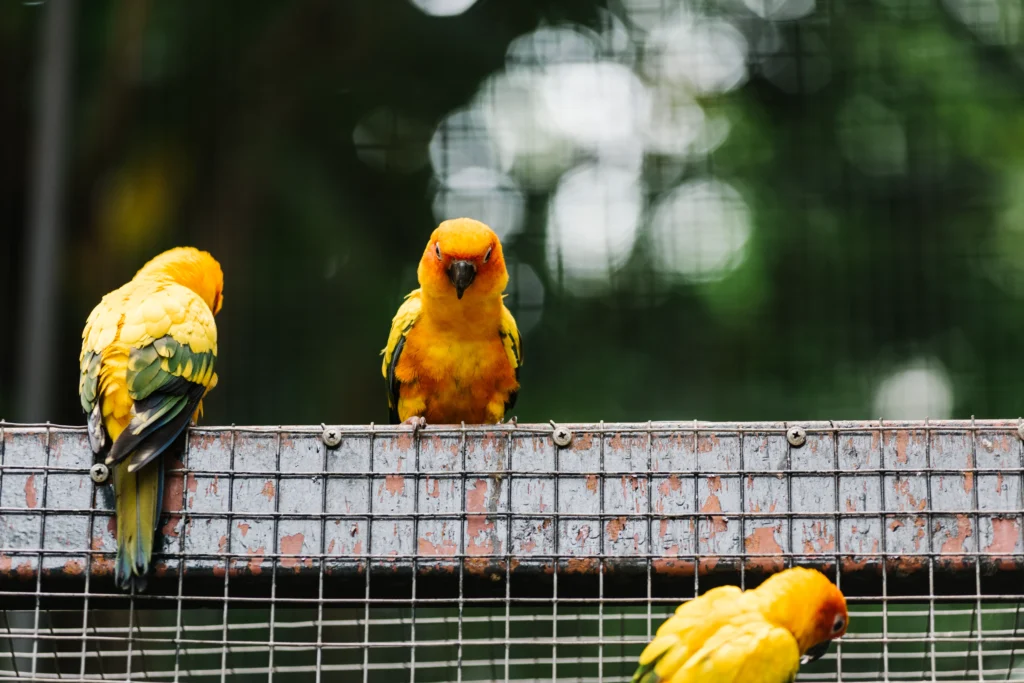
One of the most fundamental mistakes Gloster Canary bird owners make is providing an inappropriate cage. These birds may be small, but they still need adequate space to fly, exercise, and maintain their physical and mental health.
What people get wrong:
- Choosing cages that are too small (smaller than 18″ x 18″ x 18″)
- Using round cages that can disorient birds
- Placing cages in inappropriate locations like kitchens or drafty areas
- Using unsafe or toxic cage materials
- Improper perch placement or using perches of uniform diameter
The correct approach: The ideal Gloster Canary cage setup includes a rectangular cage that’s at least 18″ x 18″ x 18″, though larger is always better. Your Gloster Canary bird will thrive in a cage that allows horizontal flight, with multiple perches of varying diameters (1/4″ to 1/2″) made from safe woods like apple or willow.
Place the cage in a quiet part of your home with stable temperature, away from drafts, direct sunlight, and cooking fumes. The cage should be positioned at eye level or slightly below and include a variety of toys, swings, and environmental enrichment to stimulate your Gloster Canary bird’s natural behaviors.
The Avian Welfare Coalition recommends that even small birds like Gloster Canaries need sufficient space to stretch their wings and engage in natural behaviors like hopping between perches.
2. Improper Gloster Canary Bird Diet
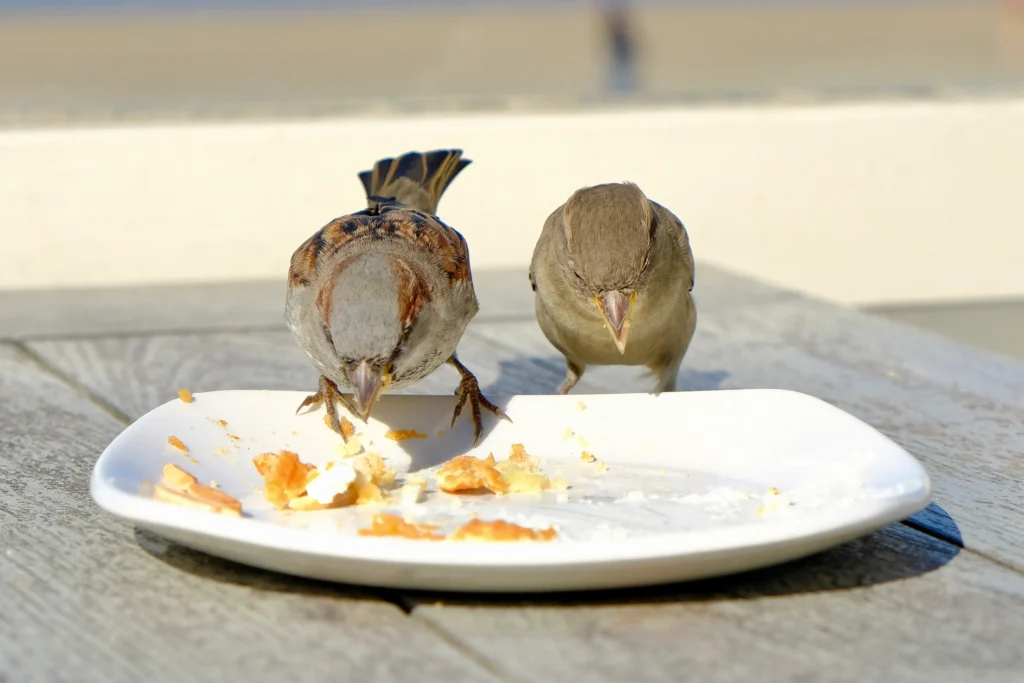
Diet is perhaps the most crucial aspect of Gloster Canary bird care, and unfortunately, it’s where many owners make serious mistakes.
What people get wrong:
- Feeding only seeds, which lacks essential nutrients
- Offering inappropriate treats or human food
- Failing to provide fresh foods regularly
- Not providing calcium sources
- Improper food storage leading to mold or spoilage
The correct approach: A proper Gloster Canary bird food regimen includes a high-quality canary seed mix as a base (around 70% of the diet), supplemented with fresh vegetables and fruits (20%), and a small amount of egg food or specialized canary pellets (10%). Dark leafy greens like kale, spinach, and dandelion greens are excellent choices for your Gloster Canary bird.
Always ensure fresh, clean water is available and changed daily. Cuttlebones or mineral blocks should be provided as a calcium source, which is particularly important during breeding season. Store seed mixes in cool, dry places and always check for freshness before feeding your Gloster Canary bird.
Research published in the Journal of Avian Medicine and Surgery has emphasized the importance of balanced nutrition for songbirds, noting that vitamin A and calcium deficiencies are common in seed-only diets.
3. Neglecting Regular Health Monitoring
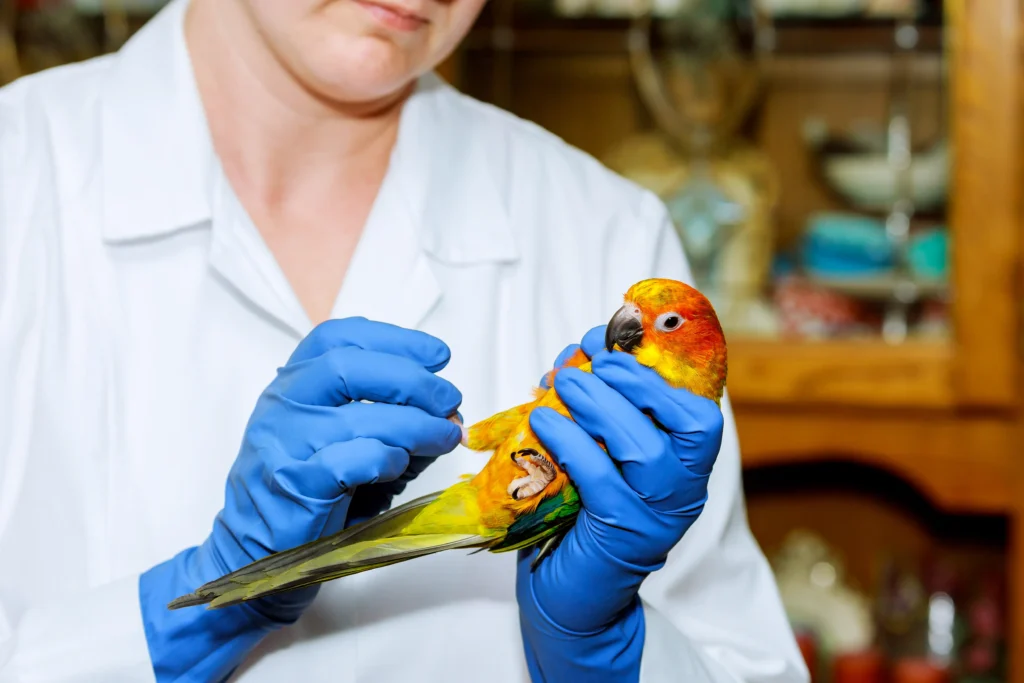
Many Gloster Canary bird owners fail to recognize early signs of illness because these birds instinctively hide symptoms as a survival mechanism.
What people get wrong:
- Infrequent or superficial observation of the bird’s condition
- Missing subtle changes in behavior, appearance, or droppings
- Waiting too long to seek veterinary care when issues arise
- Not having a relationship with an avian veterinarian
- Assuming minor symptoms will resolve on their own
The correct approach: Establish a daily health check routine for your Gloster Canary bird. Look for bright eyes, clean feathers, alert posture, normal breathing, and appropriate weight. Monitor droppings for consistency and color changes. Weigh your Gloster Canary bird weekly using a small digital scale, as weight loss is often the first sign of illness.
Find an avian veterinarian before you need one, and schedule annual check-ups for your Gloster Canary bird. Create a “health journal” to track patterns in your bird’s behavior, appetite, and appearance, which can help identify problems early.
According to The Association of Avian Veterinarians, regular health monitoring is essential as birds naturally hide signs of illness until their condition becomes severe.
4. Poor Gloster Canary Grooming Practices
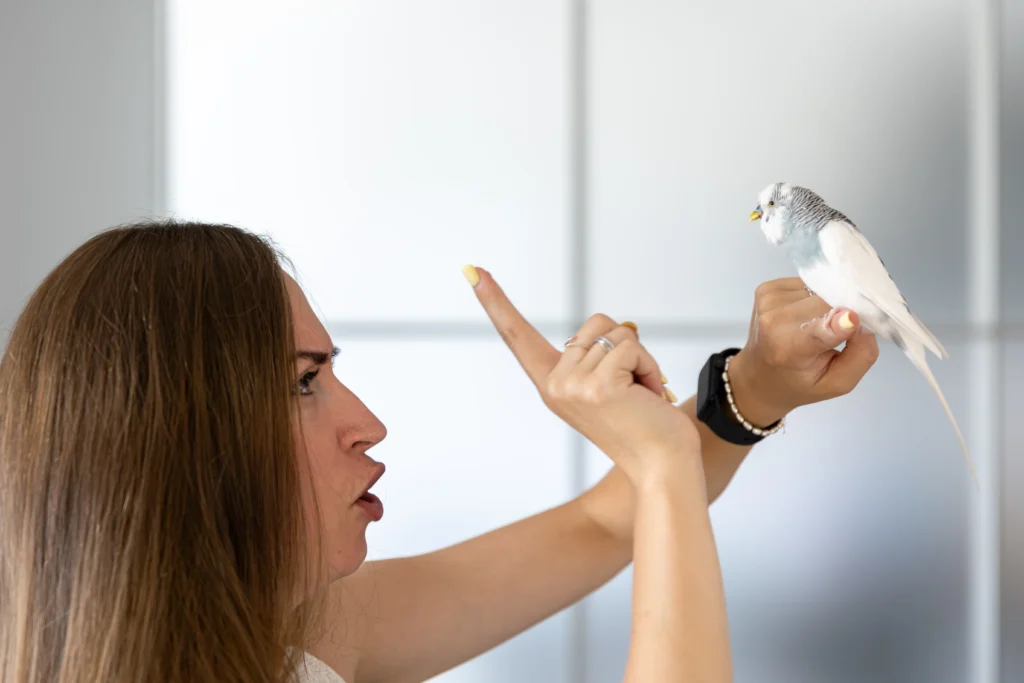
Gloster Canary grooming needs are often misunderstood, leading to problems with their distinctive feathering, especially in corona varieties.
What people get wrong:
- Never providing bathing opportunities
- Using inappropriate bathing containers
- Incorrect handling during molt periods
- Not maintaining appropriate humidity levels
- Interfering with natural preening behaviors
The correct approach: Provide shallow bathing dishes with room-temperature water several times weekly. During molting periods, which typically occur 1-2 times per year, provide additional protein in your Gloster Canary bird’s diet and ensure proper humidity (around 50-60%) to help with feather development.
For corona Gloster Canary birds, proper grooming is especially important to maintain their distinctive “bowl cut.” Never trim these feathers yourself unless you’ve been trained by an experienced breeder. Instead, focus on providing optimal nutrition and bathing opportunities to support natural feather health.
The World Bird Sanctuary emphasizes that appropriate bathing opportunities are essential for maintaining feather health in all birds, including small canaries.
5. Ignoring Breeding and Gender Considerations
Many owners fail to understand the implications of keeping male and female Gloster Canary birds together, or they misidentify their bird’s gender.
What people get wrong:
- Keeping males and females together without proper preparation for breeding
- Misidentifying male and female Gloster Canary birds
- Not providing adequate nest materials or breeding setups
- Failing to separate aggressive males during certain seasons
- Improper nutrition during breeding periods
The correct approach: Learn to properly identify whether you have a male or female Gloster Canary bird. Males are typically more vocal with complex songs, while females usually produce simpler chirps. If you’re not planning to breed your Gloster Canary birds, it’s often best to keep same-sex pairs or individuals.
If you do intend to breed, research proper breeding setups, including nesting materials, specialized breeding cages, and nutritional requirements. Be prepared to separate birds if aggression occurs, which is more common during breeding season. Always have a plan for the offspring before initiating breeding.
The National Finch and Softbill Society provides valuable resources on responsible breeding practices for canaries and other finches, emphasizing the importance of proper preparation and genetics.
6. Neglecting Environmental Enrichment
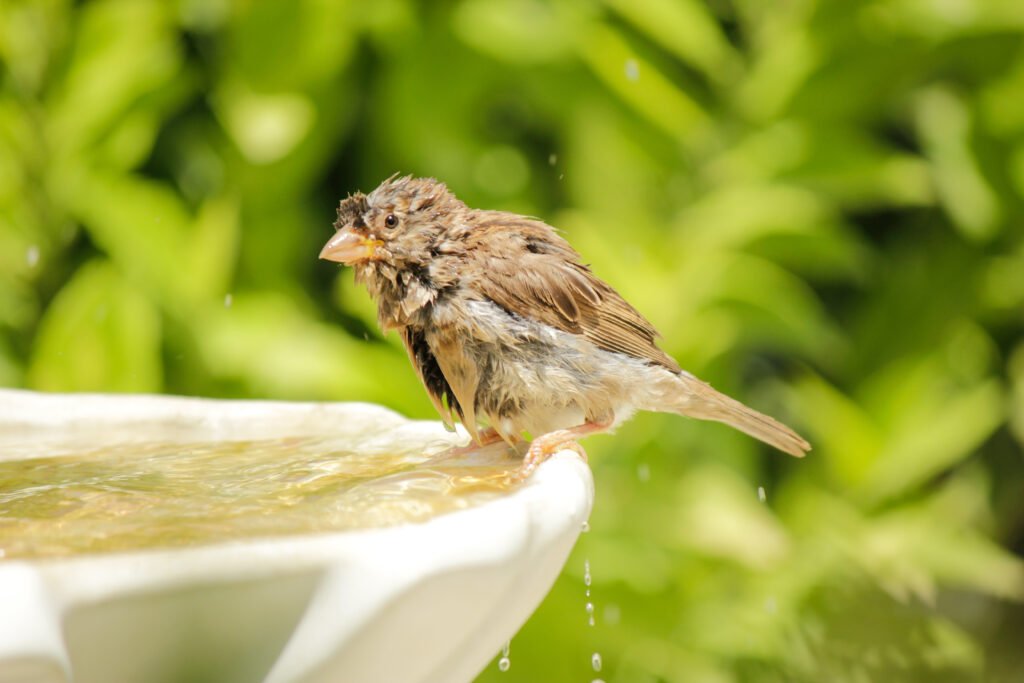
Gloster Canary birds are intelligent creatures that need mental stimulation to prevent boredom, stress, and associated behavioral issues.
What people get wrong:
- Providing a sterile, unchanging environment
- Not offering toys or play opportunities
- Failing to allow safe out-of-cage time
- Keeping Gloster Canary birds in complete isolation
- Never introducing new objects or experiences
The correct approach: Enrich your Gloster Canary bird’s environment with a variety of toys that encourage natural behaviors like foraging. Rotate toys weekly to maintain interest. Provide different types of perches, swings, and materials to explore. Consider creating a “play gym” outside the cage for supervised exercise time.
While Gloster Canary birds aren’t typically as social with humans as some other birds, they benefit from periodic interaction. Consider playing soft music or nature sounds to provide auditory enrichment for your Gloster Canary bird. For corona Gloster Canary and consort varieties alike, mental stimulation is essential for well-being.
According to BirdLife International, even domesticated birds retain natural instincts and behaviors that need appropriate outlets to prevent stress and promote mental health.
7. Improper Temperature and Light Exposure
Gloster Canary birds have specific environmental needs that, when not met, can lead to stress, illness, or reproductive issues.
What people get wrong:
- Exposing birds to extreme temperature fluctuations
- Keeping Gloster Canary birds in areas with drafts
- Providing too much or too little light
- Not understanding the importance of light cycles for health
- Placing cages near air conditioners, heaters, or windows
The correct approach: Maintain a stable temperature between 65-75°F (18-24°C) for your Gloster Canary bird. Avoid placing the cage near drafts, air conditioners, or heating vents. Provide a natural light cycle that roughly corresponds to the outdoor day/night pattern, with about 12 hours of daylight and 12 hours of darkness.
During winter months, consider using full-spectrum lighting for a few hours each day to ensure your Gloster Canary bird receives adequate UV exposure, which is important for vitamin D synthesis and overall health. Always provide a portion of the cage with shade so your bird can retreat from direct light when desired.
Research from the Cornell Lab of Ornithology has demonstrated the importance of natural light cycles for bird health, affecting everything from hormone regulation to immune function.
8. Using Harmful Household Products
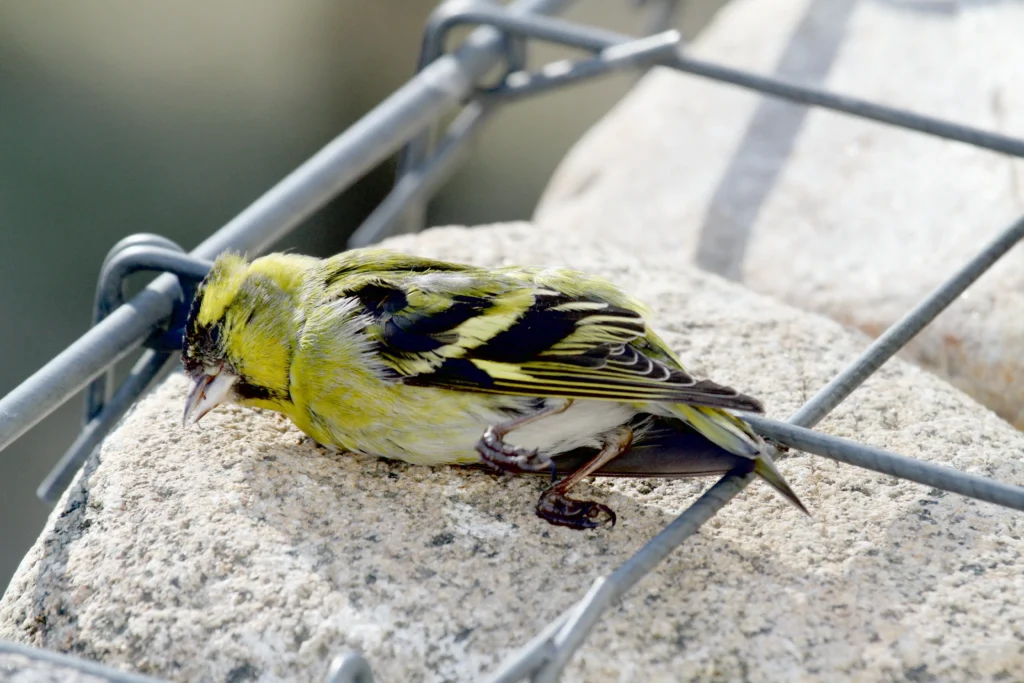
The Gloster Canary bird’s sensitive respiratory system makes them particularly vulnerable to airborne toxins that many owners unknowingly introduce.
What people get wrong:
- Using scented candles, air fresheners, or essential oils near birds
- Cooking with non-stick cookware (PTFE/Teflon) which releases toxic fumes when overheated
- Spraying household cleaners, hairspray, or perfumes in the same room
- Using chemical pest control products
- Smoking near the bird or in the same household
The correct approach: Create a safe environment by using bird-safe cleaning products like vinegar and water solutions. Never use aerosol products in the same room as your Gloster Canary bird. If you must use chemicals, remove the bird from the area completely and ensure thorough ventilation before returning the cage.
Replace non-stick cookware with stainless steel, cast iron, or ceramic alternatives. Avoid burning candles or incense, using air fresheners, or diffusing essential oils in your home. Be aware that even some house plants can be toxic to Gloster Canary birds, so research any plants before bringing them into your bird’s environment.
The Association of Avian Veterinarians warns that birds have extremely efficient respiratory systems that make them particularly sensitive to airborne toxins, with exposure potentially proving fatal within minutes.
9. Inadequate Social Interaction and Training
While not as demanding of attention as larger parrots, Gloster Canary birds still have social needs that owners often overlook.
What people get wrong:
- Complete isolation from family activities
- Inconsistent or aggressive handling
- Unrealistic expectations for tameness
- Not respecting natural behaviors like singing (particularly in male Gloster Canary birds)
- Failing to establish trust and routine
The correct approach: While Gloster Canary birds aren’t typically hand-tamed like larger birds, they benefit from gentle, consistent interaction. Place their cage in a family area where they can observe activity while still having quiet time. Speak softly to your Gloster Canary bird regularly so they become accustomed to your voice.
Respect their natural behaviors—male Gloster Canary singing should be encouraged rather than discouraged. If you have a single bird, consider providing a mirror during non-breeding seasons (though be prepared to remove it if it causes territorial behavior). Establish consistent daily routines for feeding and care to help your Gloster Canary bird feel secure.
According to Avian Behavioral Research, even small songbirds like canaries form social bonds and can experience stress when their social needs aren’t met.
Gloster Canary Types: Corona vs. Consort
One aspect of Gloster Canary bird care that deserves special attention is understanding the differences between the two main Gloster Canary types: corona and consort.
The Gloster corona canary features the iconic “bowl cut” or “Beatles haircut” crest of head feathers that many find endearing. This characteristic requires special consideration in terms of cage setup (avoiding certain types of toys or feeders that could damage the crest) and occasional grooming attention.
The Gloster consort canary has a smooth head without the crest. While both varieties share the same care requirements in terms of diet, housing, and health monitoring, corona Gloster Canary birds may need extra attention to maintain their distinctive head feathers in good condition.
When breeding Gloster Canary birds, it’s important to note that pairing two corona birds is typically avoided by experienced breeders, as it can result in offspring with excessive crest feathering that may impair vision or cause other issues. Instead, a corona is usually paired with a consort to produce healthy offspring with balanced features.
The American Canary Society provides extensive information on the breed standards and characteristics of different canary varieties, including the distinct traits of corona and consort Gloster Canaries.
Choosing a Healthy Gloster Canary Bird
If you’re in the market for a Gloster Canary bird for sale, knowing how to select a healthy specimen is crucial. Here are some tips to help you choose a healthy Gloster Canary bird:
- Observe activity levels: A healthy Gloster Canary bird should be alert, active, and responsive to its environment.
- Check physical appearance: Look for bright, clear eyes, clean feathers (especially around the vent area), and proper stance. The Gloster Canary bird’s feathers should be smooth and well-maintained.
- Listen to vocalizations: Particularly for males, listen for clear, energetic singing. Even if not currently singing, the bird should make some vocalizations that sound clear and strong.
- Examine the beak and feet: The beak should be smooth without overgrowth, and the feet should be clean with normal scaling.
- Evaluate breathing: Watch for any signs of labored breathing, tail bobbing, or audible respiratory sounds.
- Ask about age: The Gloster Canary lifespan averages 7-12 years. Knowing the bird’s age helps you understand what to expect.
- Inquire about diet: Ask what the bird has been eating and whether it readily accepts both seed and fresh foods.
The Gloster Canary bird price typically ranges from $75 to $200 depending on coloration, type (corona vs. consort), breeding quality, and your location. Be wary of prices that seem too good to be true, as extremely low prices may indicate poor breeding practices or health issues.
According to The Spruce Pets, purchasing from reputable breeders or specialty bird shops rather than large pet store chains often results in healthier birds with better genetic backgrounds.
Creating the Ideal Habitat for Your Gloster Canary Bird
A proper Gloster Canary cage setup is essential for your bird’s health and happiness. Here are the key elements:
- Cage size: Choose a cage that’s at least 18″ x 18″ x 18″, though larger is better. Bar spacing should be no more than 3/8″.
- Cage shape: Rectangular cages are preferable to round ones, as they provide more usable space and help birds orient themselves.
- Perches: Include 3-4 perches of varying diameters (1/4″ to 1/2″) and materials. Natural wood branches are ideal for foot health.
- Food and water dishes: Use dishes that are easy to clean and refill. Position them where they won’t be contaminated by droppings.
- Toys: Provide a variety of safe toys that encourage natural behaviors like foraging. Rotate them regularly to prevent boredom.
- Cage liner: Use unscented paper towels, plain newsprint, or specialized cage liners for easy cleaning.
- Bathing opportunities: Include a shallow bathing dish several times a week.
- Location: Place the cage in a quiet area away from drafts, direct sunlight, and cooking fumes. The cage should be at eye level or slightly below.
Remember that the Gloster Canary size is quite small, but these birds are active and need room to fly short distances within their cage for proper exercise.
Experts at PetMD emphasize that proper cage setup is one of the most important factors in keeping pet birds healthy and preventing behavioral problems.
Gloster Canary Health Tips: Preventative Care and Maintenance
Preventative care is far more effective than treating illness after it develops. Here are essential Gloster Canary health tips:
- Regular check-ups: Schedule annual veterinary visits with an avian specialist.
- Weight monitoring: Weigh your bird weekly using a small digital scale. Sudden weight changes can indicate health problems.
- Nail and beak care: Provide appropriate perches for natural nail wear. If overgrowth occurs, consult a veterinarian for proper trimming.
- Proper nutrition: Feed a varied diet rich in vitamins and minerals, including fresh vegetables and fruits alongside a quality seed mix.
- Fresh air and sunlight: While protecting from drafts, provide occasional access to natural (unfiltered through glass) sunlight for vitamin D synthesis.
- Stress reduction: Maintain consistent routines and provide adequate quiet time, especially during molting periods.
- Regular cleaning: Clean food and water dishes daily, and perform weekly cage cleaning to prevent bacterial growth.
- Environmental safety: Eliminate exposure to toxins like cigarette smoke, aerosol sprays, and non-stick cookware fumes.
By following these preventative measures, you can significantly extend your Gloster Canary bird’s lifespan and improve their quality of life.
The Merck Veterinary Manual provides detailed guidelines on preventative health care for pet birds, emphasizing the importance of regular health assessments.
Encouraging Your Gloster Canary Singing Abilities
One of the most cherished aspects of Gloster Canary bird ownership is enjoying their beautiful songs. While females make pleasant chirping sounds, it’s the male Gloster Canary singing that truly captivates bird enthusiasts. Here are tips to encourage and enhance your male Gloster Canary’s vocal abilities:
- Early exposure: Young males learn to sing primarily during their first 6 months. Playing recordings of quality canary songs during this period can help develop their repertoire.
- Consistent schedule: Canaries typically sing most in the morning. Uncover the cage at the same time each day to establish a routine.
- Proper nutrition: A healthy diet rich in essential nutrients supports overall health and vocal strength.
- Comfortable environment: Birds sing more when they feel secure and comfortable.
- Breeding season: Male singing increases dramatically during breeding season (typically spring), even without a female present.
- Competition: Having another male canary nearby (but in a separate cage) can stimulate competitive singing.
- Patience: Some Gloster Canary birds are naturally more vocal than others. Respect your bird’s individual personality.
Remember that excessive stress, illness, molting, and extreme temperatures can reduce singing. If a normally vocal male suddenly stops singing, monitor for other signs of illness.
Research published in Animal Cognition shows that songbirds like canaries have complex learning processes for song development that can be supported through environmental enrichment and proper care.
Identifying Male or Female Gloster Canary Birds
Determining whether you have a male or female Gloster Canary bird can be challenging, especially for novices. Here are some guidelines:
- Vocalizations: The most reliable indicator is singing ability. Males sing complex, melodious songs, while females typically produce simpler chirps and calls.
- Behavior: Males often display more territorial behaviors, such as defending their space or showing off to attract mates.
- Physical differences: While subtle, males may have a slightly straighter posture and more vibrant coloration, though this varies by specific color variety.
- Vent examination: In adult birds, an experienced breeder can sometimes determine gender by examining the shape of the vent, though this is not recommended for beginners.
- Response to mirrors: Males often sing more vigorously when seeing their reflection, perceiving it as a rival.
For absolute certainty, DNA testing is available through veterinarians and specialized services. This requires just a small feather sample and is particularly useful if you’re planning to breed your Gloster Canary birds.
The Finch Information Center offers comprehensive guides on sex determination in canaries and other finches, discussing both behavioral and physical characteristics.
Conclusion
The Gloster Canary bird is a delightful pet that brings beauty, song, and companionship to any home. By avoiding these nine common mistakes and following the guidance provided, you’ll be well on your way to providing excellent care for your feathered friend.
Remember that proper Gloster Canary bird care involves appropriate housing, nutrition, environmental enrichment, and preventative health measures. Whether you’re attracted to the unique “bowl cut” of the corona variety or the smooth head of the consort, these charming birds deserve the best care possible.
With attention to detail and commitment to learning about your pet’s needs, you can enjoy the company of your Gloster Canary bird for many years. Their sweet songs and charming personalities make all your efforts worthwhile, creating a rewarding pet ownership experience.
For more information about bird care and other pets, visit our other helpful guides at PetsMemes.
FAQs About Gloster Canary Birds
1. How long do Gloster Canary birds typically live? The average Gloster Canary lifespan is 7-12 years when properly cared for, though some can live even longer with excellent care.
2. How can I tell if my Gloster Canary bird is male or female? Males are known for their complex singing, while females typically make simpler chirping sounds. Physically, the differences are subtle, but males often have slightly straighter posture and may be more territorial.
3. What should I feed my Gloster Canary bird? A proper diet consists of about 70% quality canary seed mix, 20% fresh vegetables and fruits, and 10% protein supplements like egg food. Always provide fresh water and cuttlebone for calcium.
4. How big should a Gloster Canary cage be? The minimum recommended cage size is 18″ x 18″ x 18″, though larger is always better. Bar spacing should not exceed 3/8″ to prevent escape.
5. Why has my male Gloster Canary stopped singing? Causes may include molting, illness, stress, environmental changes, or seasonal factors. If accompanied by other symptoms like fluffed feathers or decreased appetite, consult a veterinarian.
6. What’s the difference between corona and consort Gloster Canary birds? The corona has the distinctive “bowl cut” or crest of head feathers, while the consort has a smooth head. Both types require similar care, though coronas may need extra attention to maintain their crest.
7. How often should I clean my Gloster Canary’s cage? Food and water dishes should be cleaned daily, perches wiped weekly, and the entire cage thoroughly cleaned once a week.
8. Can Gloster Canary birds be kept with other birds? They can sometimes be housed with other canary varieties or similar-sized finches in large aviaries, but never with larger or aggressive species. Individual personalities vary, so close monitoring is essential.
9. How much does a Gloster Canary bird typically cost? The Gloster Canary bird price typically ranges from $75 to $200 depending on type, color, quality, and location.
Visit our complete bird care guides


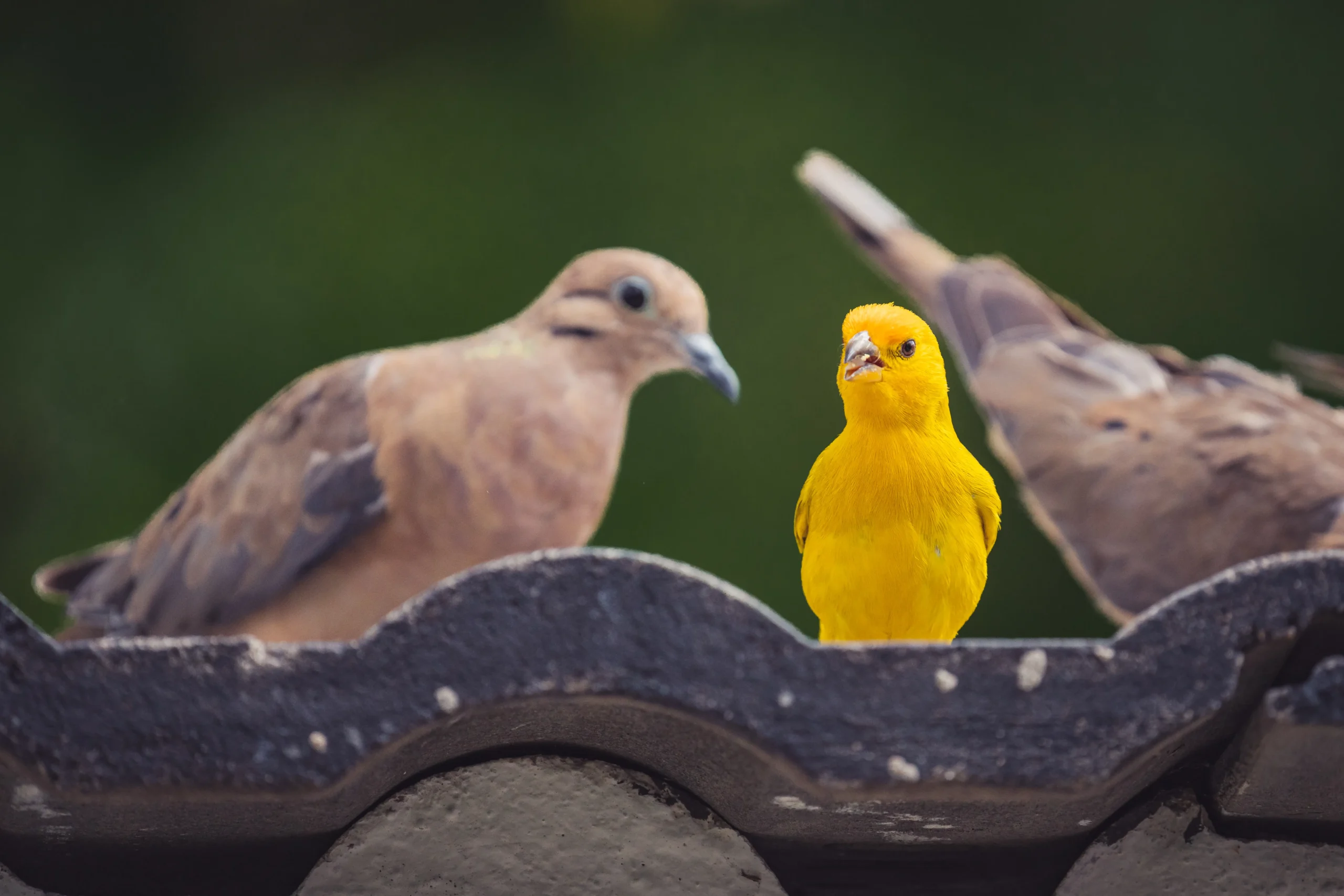


Leave a Comment